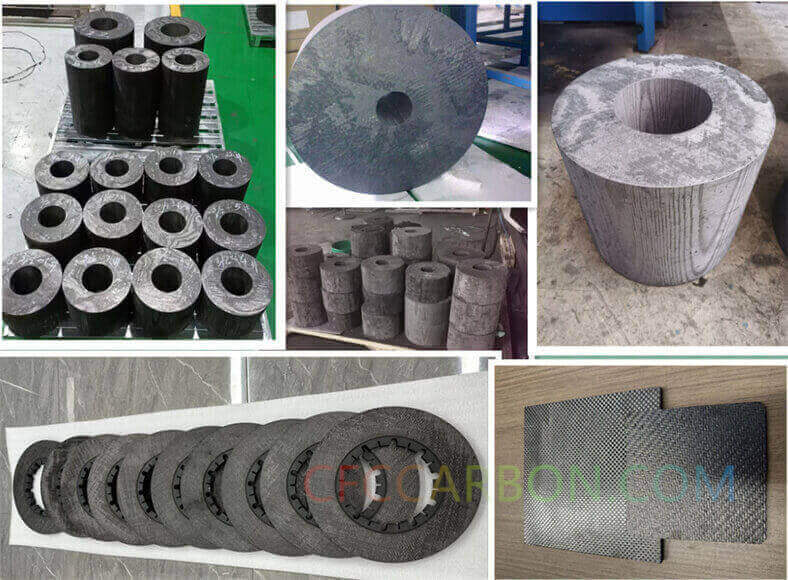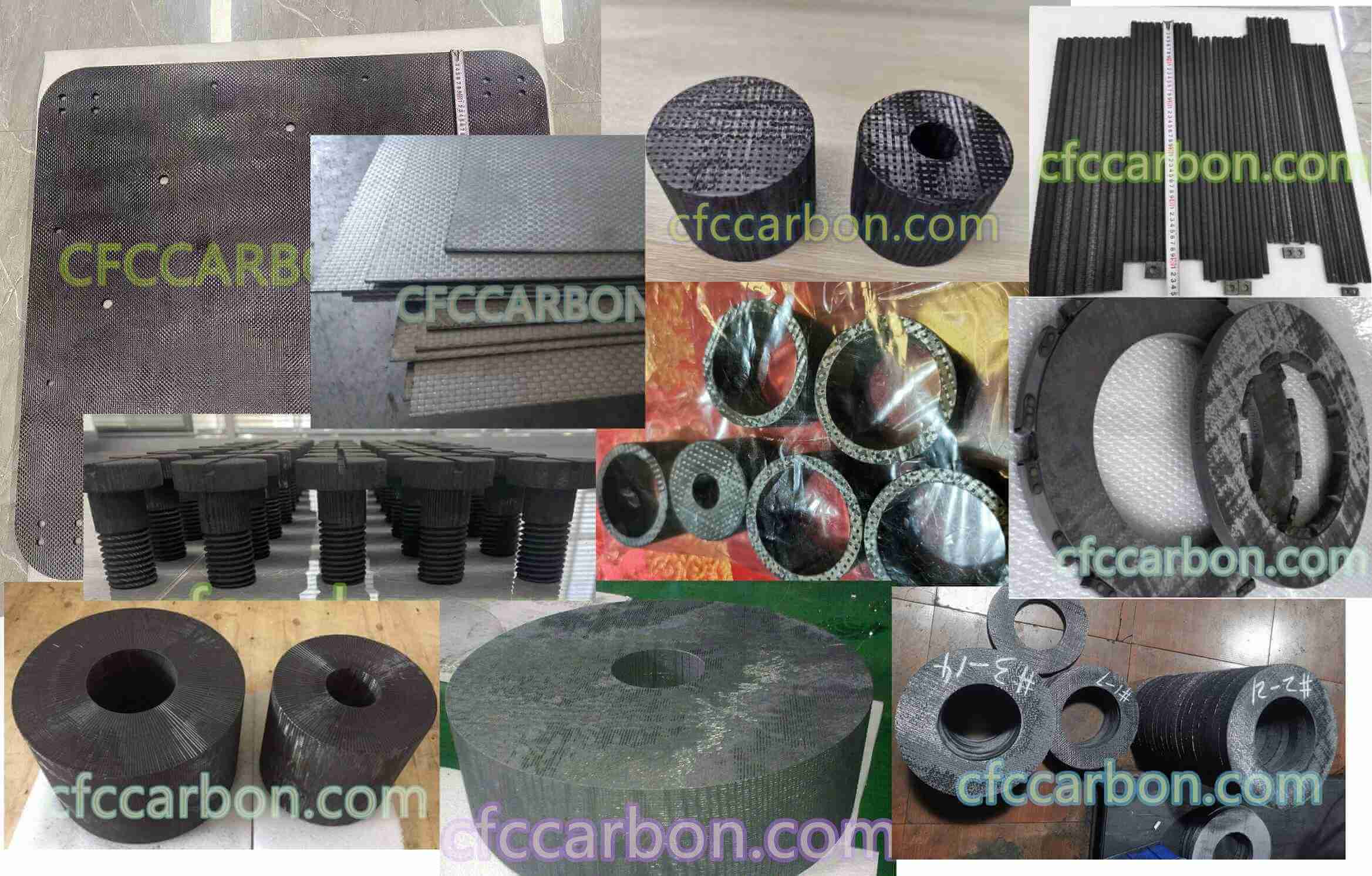Understanding Oxidation Mechanisms in Carbon-Carbon Composites: Challenges and Innovations
By Harry Li, from CFCCARBON CO., LTD | Updated: May 17, 2025
What Are Carbon-Carbon Composites?

3D 4D carbon fiber composite material manufacturer factory -airplane brake disc plates sheets U L profiles-2D(s)
Carbon-carbon (C/C) composites are advanced materials composed of carbon fibers embedded in a carbon matrix. This unique combination leverages the high strength of carbon fibers and the thermal stability of the carbon matrix, making them ideal for extreme environments such as aerospace propulsion systems and re-entry vehicles. Unlike conventional composites, C/C materials retain mechanical properties at temperatures exceeding 2000°C, with a low density (1.83 g/cm³) and exceptional thermal shock resistance.
The Oxidation Challenge
While C/C composites excel in inert atmospheres, their Achilles’ heel lies in oxidation. At temperatures above 482°C (900°F), carbon reacts with oxygen, leading to rapid degradation. Key oxidation mechanisms include:
-
Differential Oxidation Rates: Between 650–800°C, the matrix carbon oxidizes faster than the more graphitic fibers. Oxidation initiates at the fiber-matrix interface, progresses through the matrix, and eventually attacks the fibers.
-
Fiber Type Influence: Composites using polyacrylonitrile (PAN)-based fibers exhibit higher reactivity compared to pitch-based fibers due to differences in graphitic crystallinity.
-
Environmental Factors:
-
Flow Rate: Higher gas flow rates accelerate oxidation by reducing boundary layer diffusion resistance.
-
Mechanical Stress: Tensile stresses widen microcracks, accelerating oxygen penetration, while compressive stresses show minimal impact.
-
Manufacturing Processes and Oxidation Susceptibility

carbon fiber composite material manufacturer in China(1)
The fabrication method significantly impacts oxidation resistance:
1. Liquid Phase Infiltration (LPI)
-
Process: Carbon preforms are impregnated with pitch or phenolic resin, followed by pyrolysis (538–1000°C) and repeated densification cycles.
-
Limitation: Residual porosity increases oxidation vulnerability due to incomplete matrix densification.
2. Chemical Vapor Infiltration (CVI)
-
Process: Hydrocarbon gases (e.g., methane) decompose at 982–1204°C, depositing pyrolytic carbon onto fibers.
-
Advantage: Produces denser matrices with higher thermal conductivity (101 W/m·K), delaying oxidation onset.
3. Heat Treatment
-
Graphitization at 2500°C enhances crystallinity, improving oxidation resistance. However, impurities from precursors (e.g., sodium in PAN fibers) may persist, accelerating degradation.
Strategies for Oxidation Protection
To extend service life in oxidative environments, industry leaders employ multi-layered solutions:
-
Ceramic Coatings:
-
Silicon carbide (SiC) coatings applied via CVD or pack cementation form a barrier against oxygen diffusion.
-
Multilayer systems (e.g., ZrB₂-SiC) withstand temperatures up to 2300°C, reducing mass loss by 80%.
-
-
Matrix Modification:
-
Incorporating boron or silicon additives inhibits oxidation through glassy phase formation at high temperatures.
-
-
Functional Graded Materials (FGMs):
-
Gradient layers of SiC and carbon balance thermal expansion mismatches, preventing coating delamination.
-
Applications and Market Outlook
C/C composites dominate high-performance sectors:
-
Aerospace: Rocket nozzles, heat shields, and brake discs (e.g., SpaceX Starship thermal protection).
-
Energy: Nuclear reactor components and plasma-facing materials in fusion reactors.
-
Industrial: High-temperature furnace elements and semiconductor manufacturing tools.
Future Innovations
Research focuses on:
-
Self-Healing Composites: Microencapsulated healing agents autonomously repair oxidation-induced cracks.
-
Nanomaterial Integration: Graphene and carbon nanotubes enhance interfacial bonding, reducing oxygen permeability by 40%.
-
AI-Driven Process Optimization: Machine learning models predict oxidation rates under multi-factor conditions (temperature, stress, flow).
Conclusion
While oxidation remains a critical challenge for carbon-carbon composites, advancements in coatings, matrix engineering, and computational modeling are unlocking new frontiers. For detailed technical specifications and product solutions, visit CFCCarbon, a pioneer in high-temperature composite innovation.
Key Terms for SEO:
Carbon-carbon composites, oxidation resistance, aerospace materials, CVI process, SiC coatings, thermal protection systems, high-temperature composites
References
-
TWI Global – Carbon-Carbon Composites Overview
-
ScienceDirect – Carbon-Carbon Composite Properties
-
TWI – C/C Manufacturing Processes
-
Frontiers in Materials – C/C Applications
-
Springer – Oxidation Behavior Study
-
Carbon Journal – Oxidation Theoretical Analysis
-
Advanced Carbon Council – Market Data
-
SubsTech – C/C Fabrication & Properties
related news /articles:
Overcoming the Oxidation of carbon carbon composite and coatings on CC composite
Applications of carbon-carbon composite (4)-High-Performance Industries
Advanced Protective Coatings for Carbon-Carbon Composites
Introduction of high-temperature coatings on CC composite material